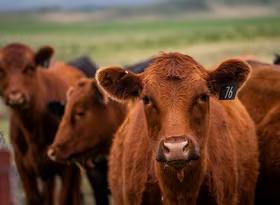Should there be price on agricultural emissions (methane and nitrous oxide emissions)? It’s a matter of efficiency and equity.
Pricing matters to achieving our carbon target
New Zealand has a price on greenhouse gas (GHG) emissions, primarily carbon dioxide emissions. This pricing mechanism is the essence of the Emissions Trading Scheme (ETS). The scheme will over time, given a cap on total emissions, lead to lower gross emissions and lower net emissions (gross emissions less sequestration by forestry).
Under the scheme, only a set limit of emissions will be able to occur, and to emit, an emissions unit will be required. These emissions units have a cost attached, and so the ETS mechanism not only provides for a reduction in emissions, but also provides for a market to decide where the reductions come from.
The government has also set an international target to reduce greenhouse gas emissions by 50% below 2005 levels by 2030.
Most modelling suggests that this target will not be met purely by domestic emissions reductions. That result means we will need to purchase international emission units to make up the difference. Who pays for those international units?
Who pays? And who should pay?
In the first instance the government pays, ideally using revenue it receives from selling emission units under the ETS to emitters of GHGs, less whatever it might pay to the forestry industry for sequestration. In other words, the polluters pay, with most of those costs generally finding their way to final consumers.
However, if there is no price on agricultural emissions of methane and nitrous oxide, which also contribute to global warming, that industry has a free pass. This free pass is concerning for two reasons:
- Efficiency: There may well be emissions reduction options that would be encouraged by an emissions price – changes in land use or changes in fertiliser use for example. Any reduction in emissions would help to lower the cost burden of buying international emission units.
- Equity: Even if nothing can be done to reduce agricultural emissions, why should agriculture not pay for its share of emissions – or its share of the cost of purchasing international emission units – like every other industry should?
Two reasons have been proposed to this question, namely that if less food is produced in New Zealand, other countries with even more GHG-intensive production methods will produce more (an effect often called carbon leakage), or the world price of food will rise, further exacerbating global poverty.
There is little empirical support for either of these arguments, but let’s assume they have some merit. The question for New Zealand then becomes:
If we give agriculture a free pass on emissions pricing (ostensibly preventing carbon leakage or worsening global poverty), how much ETS revenue is foregone and what implications might that forgone revenue have?
Large costs if agriculture is excluded from paying its way
Our modelling to 2030 projects net emissions to be about 16Mt short of the 50% reduction target. At a carbon price of say $150/tonne, the cost to New Zealand to buy international emission units would be $2.4b – just in 2030.
Projected gross emissions excluding agricultural emissions in 2030 are about 30.8Mt, theoretically implying gross revenue from the ETS of $4.6b. So, after paying $2.4b for international emission units, $2.2b is left for other purposes including credits for sequestration and potential revenue foregone from industrial free allocation.
If all emissions are subject to the full ETS price, gross revenue would be $10.6b, so much more of the ETS revenue can be used for other purposes. That’s allowing for some emissions reduction in agriculture.
So, the two extreme scenarios are:
- No price on agricultural emissions, and so (perhaps) no carbon leakage nor higher world food prices – but with considerably lower revenue to assist with the carbon transition over time.
Or
- Fully pricing agricultural emissions with the possibility of carbon leakage or higher world foo d prices, but with additional ETS revenue of up to $6.0b ($1,100 per person) to redistribute back to households, invest in clean energy, subsidise home insulation etc.
In between these two options is what the current default option is. The current default option sees agricultural emissions enter the ETS in 2025 with 95% free allocation, abating at one percentage point per annum thereafter. So, in 2030, this scenario would see agricultural emissions receive 90% free allocation. In this case, the revenue difference is somewhat lower at $5.4b ($990/person).
Tricky trade-offs for the public, and decision makers
The question of which option to choose is for society as a whole to answer. All economists can do is quantify the trade-offs. However, it is important to outline the options and what might be foregone under various scenarios. There are always costs to production, but the wider cost and how New Zealand transitions are affected by who pays those costs



